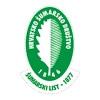
DIGITALNA ARHIVA ŠUMARSKOG LISTA
prilagođeno pretraživanje po punom tekstu
| ŠUMARSKI LIST 1-2/1966 str. 15 <-- 15 --> PDF |
to the selection of plus trees which should have been used for seed orchards. It is certain that in this case caution should be exercised. We consider, however, that for further improvement also such plus trees can be used. 7. SELECTION FOR WOOD QUALITY In tree improvement work more and more attention is paid to wood quality, i.e. anatomical and physical properties of wood. According to Mitchel l (28), the most important properties are: density, ratio between earlywood and latewood within the growth ring, number of growth rings per centimeter, fibre length and thickness, fibril orientation and the occurrence of abnormalities. Mitchel l (27) considers that these anatomical and physical properties, especially the position of fibrils and wood density, are genetically controlled. Zobe l (41) reported in 1954 that specific gravity of the wood of Loblolly Pine (Pinus taeda L.) is under close genetic control. Later works of Zobe l and his collaborators on improvement of southern Pines in the U.S.A. strengthened our knowledge of inheritance of specific gravity. Z o be i (43) says in general that the length of the tracheids and specific gravity in Conifers are under genetic control. Investigations have shown that there are also variations in branching, growth, stem straightness and other morphological characteristics. Therefore in the improvement of wood quality it is possible to select individuals with desired characteristics. Thus, for instance, Du f fiel d (11) reported variation in trachcid lenght in Pseudotsuga menziesii (Mirb.) Franco. Similar types were found among trees within the same stand. By means of a graphical method it was possible to estimate the extreme plus and minus variants. Va n B u i j t e n e n (5) found significant differences in wood density among clones of Loblolly pine (Pinus taeda L.). He also found differences in wood density in progenies originated from controlled pollinations. According to Mitchell (28), the well-established ratio between wood density and pulp content provides a method of evaluating trees on the basis of wood density. Trees can be classified as below average, average, above average or outstanding with respect to wood quality. We believe that in the improvement of wood quality the mathematical indices will be determined first, for use in the selection of plus trees. Substantial progress has already been made toward achievement of this objective. SELEKCIJA PLUS STABALA UVOD Plus stabla koriste sc, ´kako navodi Schreine r (36), za podizanje sjemenskih plantaža, za uzgoj ukoliko je moguće klonsko razmnažanje putem rožnica te za korišćenje kod hibridizacije, tj. rada na oplemenjivanju. Prema tome razumljivo je da se velika pažnja pridaje izboru plus stabala. Od izbora početnog materijala u mnogome ovisi i uspjeh daljnjeg rada na oplemenjivanju kao i konačni rezultat. Razvojem šumarske genetike razvijale su se i metode izbora plus stabala. U početnim stadijima šumarske genetike kada se radilo s velikim entuzijazmom, ali možda s manje znanja o nasljeđivanju svojstava kod šumskog drveća, izbor plus stabala vršio se uglavnom okularnom procjenom. Smatralo se da takav izbor u potpunosti zadovoljava i da će daljnje korišćenje tako izabranog materijala sigurno dati željene re |